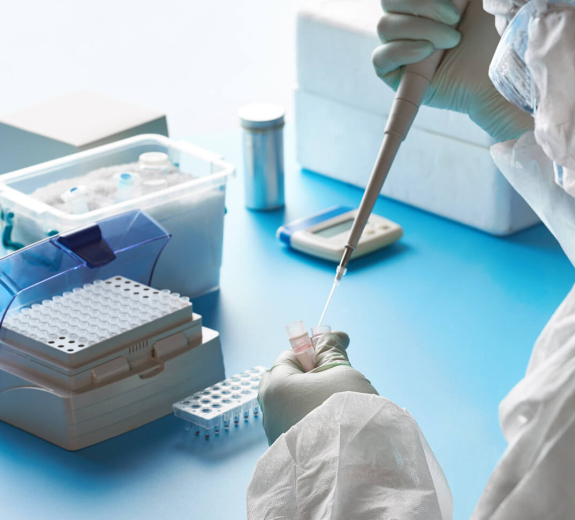Our Ever-Evolving Genome
A copy of our genome lives in every cell of our bodies, carrying instructions for how our bodies are built. Over time, our genome accumulates slight mistakes (or variations) in its code. These can be caused by environmental exposures like ultraviolet light or radiation, or even when the genome is duplicated during cell division. If these variants occur in our germ cells (sperm or egg), the variant can be passed to future generations. Many variations become prevalent in a population giving rise to differences in our physical appearance and disease susceptibility.
Scientists have mapped more than a hundred million genetic variants in the human genome. Most of them don’t make a noticeable difference in our health or development. It likely requires dozens of genetic variants to be present at the same time to invoke a trait like autoimmunity.
Even then, the combination of variants won’t always trigger disease. Rather, the genetic variants set the stage — like how dryness and heat make a forest vulnerable to fire.
“For people with the right genetic variants, something like getting a respiratory infection or eating a certain diet could be the initial spark that gets the disease going,” Dr. Ray says.
New Frontiers at BRI
A number of variables can lead to disease — from environmental factors like sun exposure to the nanoscopic habitat of the genome itself. This makes it difficult to pinpoint exactly which variables and combinations of variables can start disease.
That’s why Dr. Ray is excited to take advantage of the world-class data analysis tools in the Systems Immunology Division, which will help him find patterns among these huge amounts of data. He sees a lot of potential to collaborate with Hamid Bolouri, PhD, who also joined BRI this year and who shares an interest in gene regulation.
Dr. Ray is also excited for the chance to study diseases in actual humans, as opposed to cellular models. This will be possible with the help of the clinicians he’ll work alongside, as well as BRI’s rich biorepository.
“There is a lot more data about how genetic variants track with attributes of healthy immune systems than how they act on sick ones,” Dr. Ray explains. “The biorepository allows me to compare data from a sick population with that of a healthy population, so I can identify which variants tend to act in a disease state.”
Hitting the Ground Running
Dr. Ray is already continuing an experiment he began at the Broad Institute. The experiment focuses on five autoimmune diseases, including rheumatoid arthritis and type 1 diabetes, which are influenced by immune cells called T-cells.
“Normally, T cells are one of the body’s best defenders, seeking out and attacking infected cells,” says Dr. Ray. “But in some diseases, T cells actually attack healthy cells — and genetic variants may be one reason why.”
Other research has already associated about 20,000 genetic variants to these five diseases. Of those variations, only a fraction is likely to actually cause disease. To identify them, Dr. Ray will use different methods to test the variants in T cells and see whether any of them change how the T cells function.
If they do, then we’ll have a better understanding of what can spark these autoimmune diseases. And that may lead to new — and perhaps even personalized — methods of prevention and treatment.
“With lupus, for example, most patients are currently treated with medicines that can have long-term side-effects, such as steroids,” he says. “But because of genetic variation, one person’s lupus may follow a different genetic pathway than another person’s. By identifying each pathway, we can develop drugs with less side effects, tailored specifically to each person and their individual disease.”




